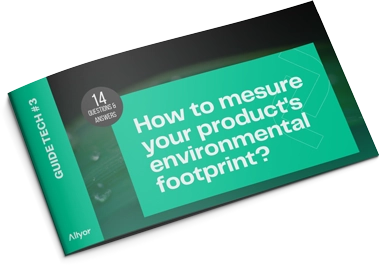How can you calculate and
analyse your product’s
ecological footprint?
The Tech guide from Altyor’s experts


Measuring your product’s impact on the environment
Life cycle analysis is the starting point for understanding the impact of your product on the environment. To help you understand the ins and outs of what’s known as LCA (life cycle assessment), we’ve put together 14 answers that will shed some light on the subject.
The challenges of a life cycle analysis
Any eco-responsible approach to your product must begin with an analysis of its real impact: is it transport, production, your packaging, the materials you use? Answering these questions will enable you to implement the most effective actions possible. It’s this life cycle analysis that will enable you to do this. It’s a multi-criteria approach that aims to quantify and identify all the material and energy flows involved in the life of a product.
But how do we go about it? What data will be extracted? What actions can be taken as a result? In this guide, our experts have answered the questions you need to understand life cycle analysis. Here are some of the questions you may find :
Download your guide
From design to industrialization, production and remanufacturing, we offer ongoing, customized global support to ensure the success of your project.
01
Innovation support
_Building a solid foundation for your industrial project
02
Mechanical and electronic design
_Giving lasting life to your product
03
Industrialization
_Industrializing your product to make your production more reliable
04
Production
_Implementing your robust production line
05
Remanufacturing
_Supporting your product’s life cycle